How to maintain a brushcutter engine

As you know, careful maintenance and thorough cleaning are crucial for ensuring the efficient operation and durability of gardening tools, including brushcutters. Brushcutter maintenance involves carrying out regular small jobs before or after using the machine, following a certain number of working hours and prior to winter storage. If you have a petrol-engine brushcutter, pay sufficient care to engine maintenance.
The attention you dedicate to looking after your brushcutter will pay off in the long run, by helping to keep the machine functioning at maximum efficiency, ensure a longer service life, spot any malfunctions early and avoid annoying breakdowns. In this article we explain how to maintain a petrol-engine brushcutter and specifically its engine.
Brushcutter cleaning
Cleaning is part and parcel of routine brushcutter maintenance: don’t put it off until next time! Instead, spend a few minutes servicing your machine at the end of each work session. It is also an opportunity to inspect the brushcutter and keep an eye out for breakage, leaks and worn components:
-
Clean grass, dust and earth from the brushcutter body.
-
Clear dirt from the air vents on the engine cowling.
-
Check the starter rope: is it intact?
-
Fuel tank: are there any leaks? Also remember to wipe off any fuel spillages after refuelling.
-
Keep the cutting attachment clean and inspect the stone guard for damage.
-
Check the sharpness of the blade or disc, if you use them instead of trimmer line.
-
Make sure that the brushcutter nuts, bolts and screws are well tightened, including the nut securing the blade or disc casing.
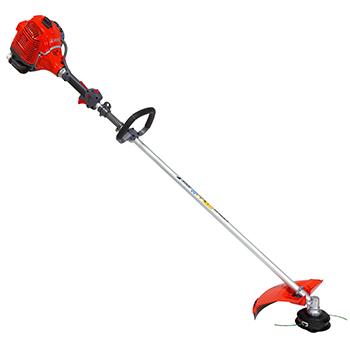
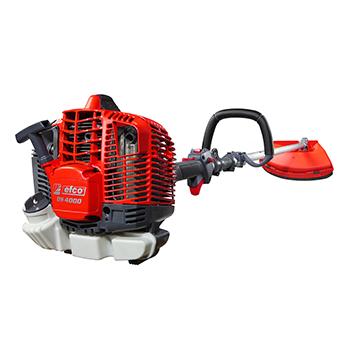
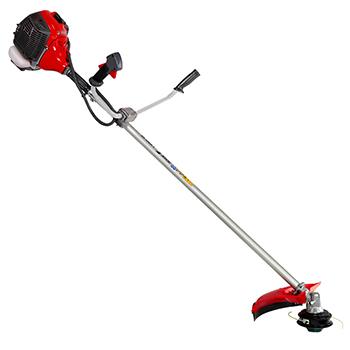
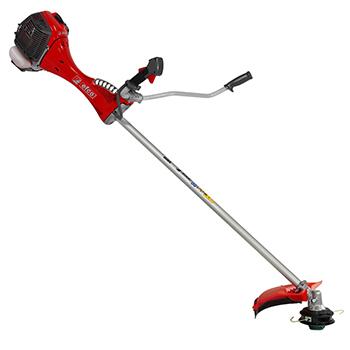
Maintaining the brushcutter engine
These guidelines apply to routine maintenance of all types of petrol-engine brushcutter: from lightweight models to medium-powered models and professional brushcutters. Among the various professional models, all with 2-stroke engine, Efco offers you both the DS 4000 S with 1.83 kW power rating and conventional single handle, as well as the DS 5300 T and DS 5500 BOSS, both outputting 2.4 kW and with a handlebar grip. These brushcutters can not only mow for extended periods on large areas of uneven ground, but can also slice through challenging vegetation, including tall, tough grass, brushwood and shrubs.
Before performing maintenance on your brushcutter, make sure that the engine and muffler are cold, remove the boot from the spark plug and protect your hands with utility or chain-resistant gloves, especially when handling the brushcutter blades or disc.
Now let's get on with maintaining your petrol brushcutter. Here's what to do to your 2-stroke engine:
-
Clean the air filter: simply disassemble it and tap it lightly against a hard surface after every 8-10 hours of mowing. If that doesn’t suffice, brush it or use compressed air to gently blow from the back of the filter towards the exterior. Replace the filter if damaged or soiled with fuel, and at least every year or after every 100 working hours.
-
Extract the fuel filter from the tank once a month and change it if damaged. We recommend replacing it annually or every 100 hours.
-
Clean the engine cylinder fins once a month using a brush or compressed air.
-
Clean the spark plug with a cloth and check the gap between the electrodes. Replace it if necessary, otherwise change it at least every year: for the specifications of spare parts, carefully follow the information in your brushcutter’s user and maintenance manual.
Another important task for looking after your brushcutter is checking the level of grease in the bevel drive and topping it up when needed. The bevel drive is the element that turns the brushcutter’s cutting attachment by means of gear wheels. After every 30 working hours you simply need to remove the screw on the end section of the brushcutter shaft and squeeze no more than 10 g of molybdenum disulphide grease directly from the tube.
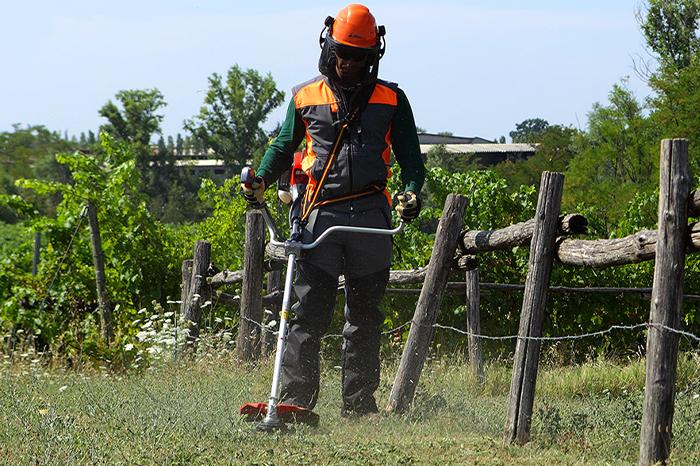
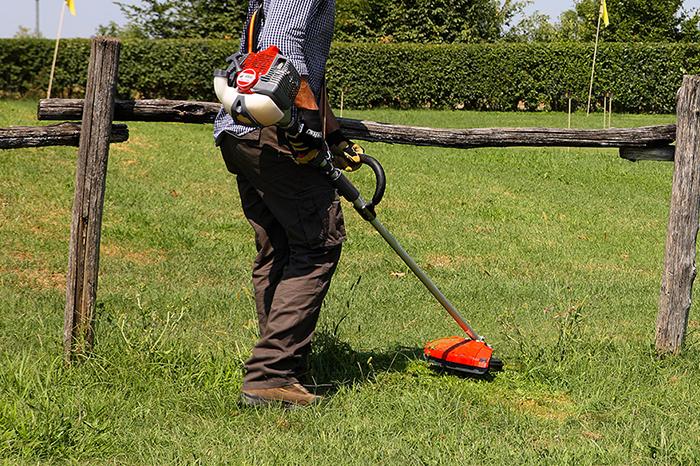
Storing the brushcutter at the end of the season
When you stop mowing in the colder months, or whenever your brushcutter is going to be unused for an extended period, spend a little time preparing it for storage:
-
Empty and clean the 2-stroke engine's fuel tank of the brushcutter: this should be done outdoors or in a well-ventilated area.
-
Drain all mixture from the carburettor: to do this, start up the brushcutter and leave the engine running until it turns off by itself.
-
Perform all the above-mentioned maintenance tasks on the brushcutter engine’s air filter, fuel filter, cylinder fins and spark plug.
-
Give the brushcutter a good clean, including the air intakes on the engine cowling.
-
Grease the metal parts to keep them working efficiently, without forgetting the bevel drive.
-
Remove the disc (or blade), clean it and oil it to prevent rust.
Store the brushcutter in a dry and sheltered environment. Don’t place it directly on the ground and keep it away from heat sources, covered with a tarpaulin sheet if possible.
If you are weighing up whether to buy a brushcutter, read our blog article which recommends what to cut with a brushcutter: it outlines the different jobs you can do with this tool, from simple finishing to much more demanding activities such as cutting small shrubs, reeds or undergrowth.



